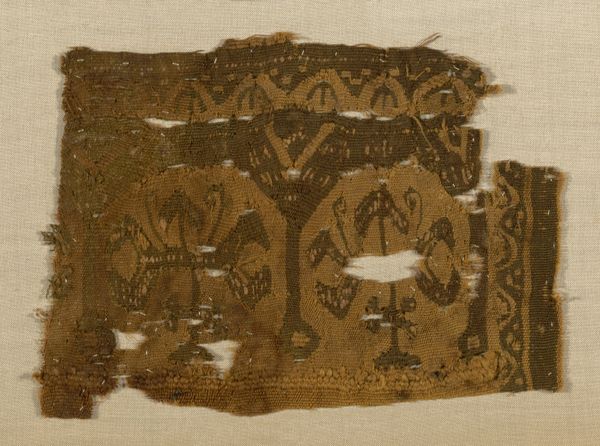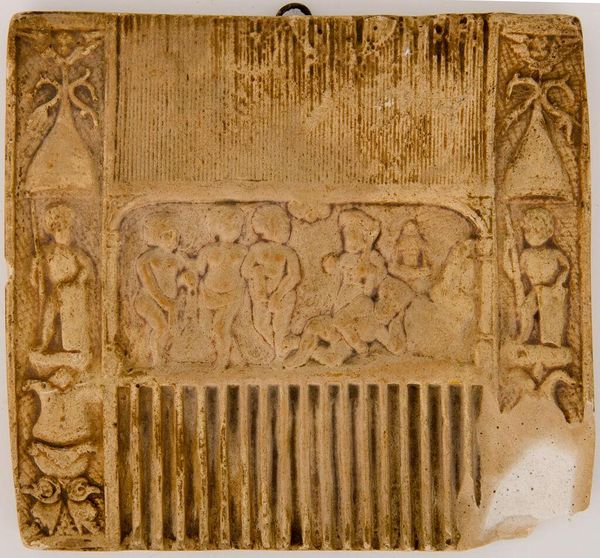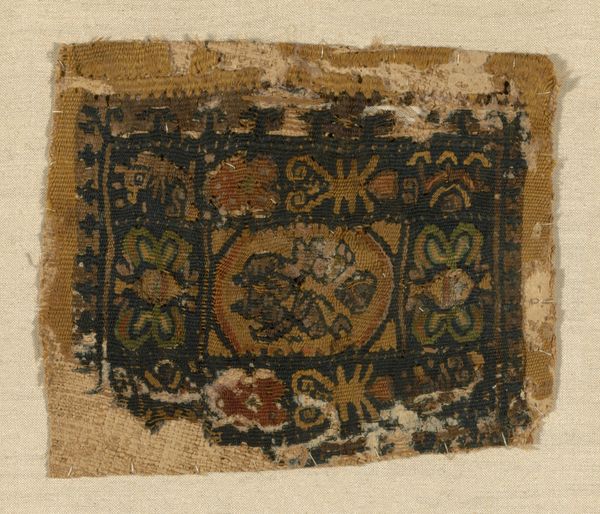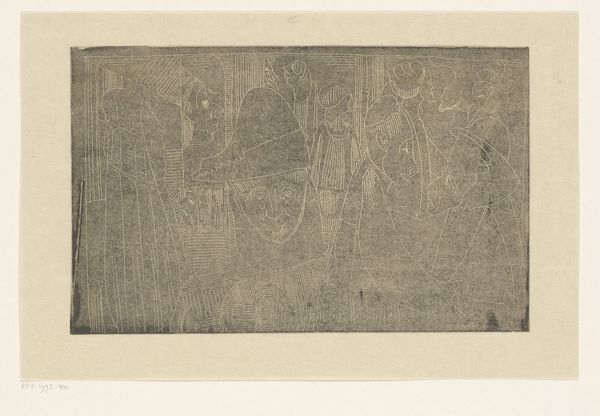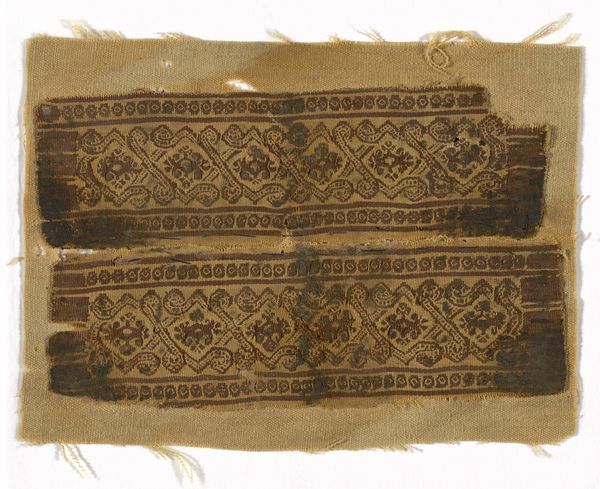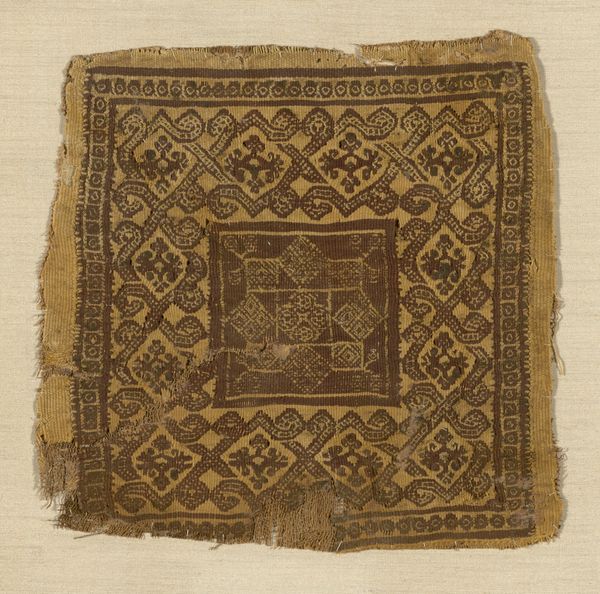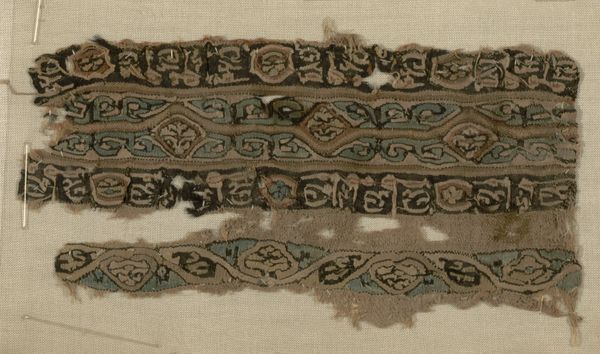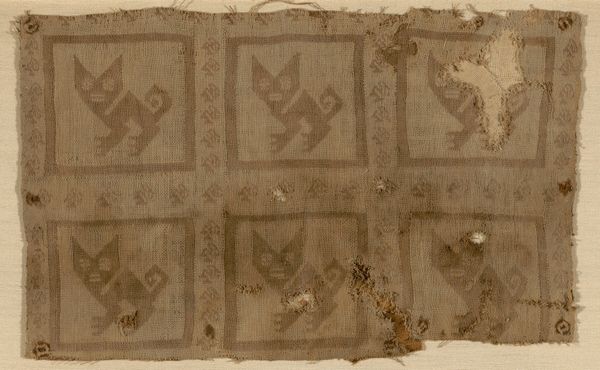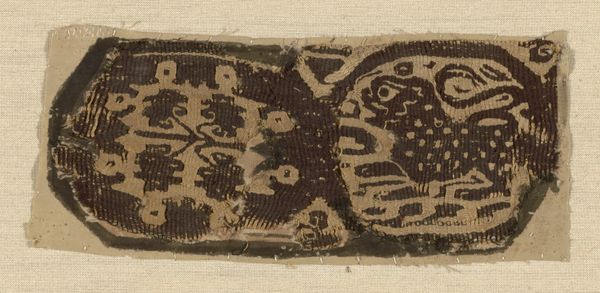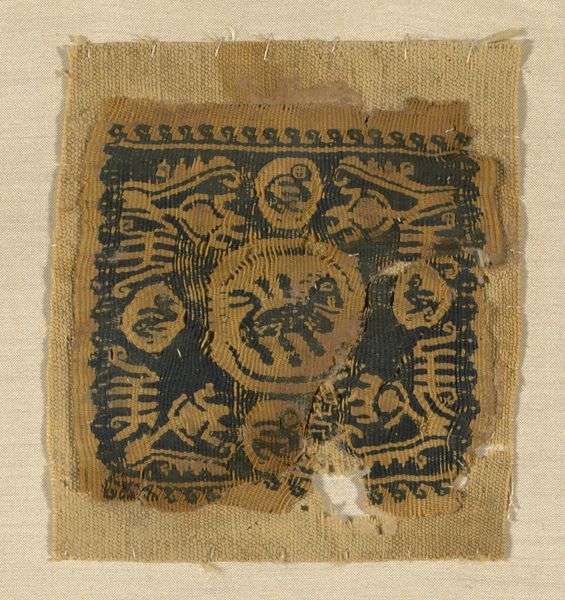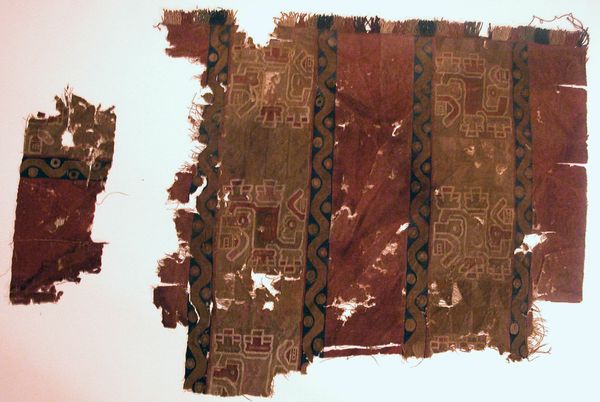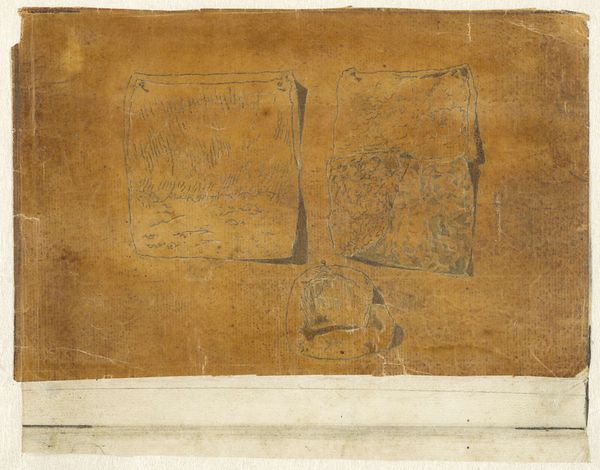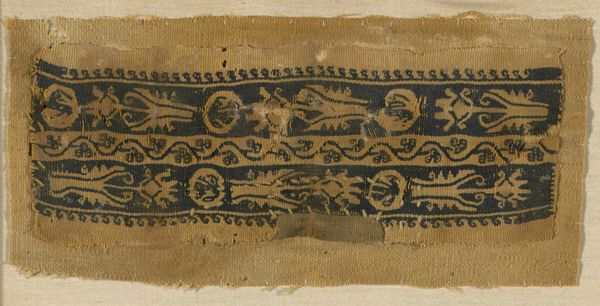
Fragment (Tunic) Roman period (30 B.C.– 641 A.D.), 5th/6th century
0:00
0:00
fibre-art, weaving, textile
#
byzantine-art
#
fibre-art
#
pattern
#
weaving
#
textile
#
figuration
#
ancient-mediterranean
Dimensions: 19 × 24.8 cm (7 1/2 × 9 3/4 in.)
Copyright: Public Domain
This is a fragment from a tunic, crafted in Coptic Egypt from linen and wool. At first glance, the tunic’s composition is dominated by horizontal bands punctuated with circular motifs. This arrangement creates a sense of rhythm and order, yet the fragment's damaged state introduces an element of chance, disrupting any rigid interpretation. The contrast between the dark indigo and the light brown is striking, defining the patterns and highlighting the texture of the weave. The circular designs are especially intriguing as their symmetry draws the eye, acting almost like a semiotic signifier amidst the broader textile. We can see a structured approach to decoration, utilizing repetitive patterns and balanced shapes to adorn the garment, giving us a peek into the aesthetic values of its time. These visual elements, while decorative, invite us to consider the tunic not just as a piece of clothing but as a material artifact embedded with cultural meaning.
Comments
No comments
Be the first to comment and join the conversation on the ultimate creative platform.
